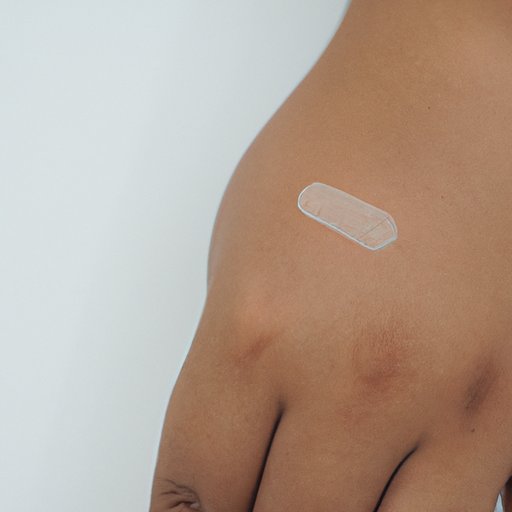
I. Introduction
Getting a cut is a common experience, but it’s important to keep an eye out for infections that could derail the healing process. By recognizing the symptoms of an infected cut and taking steps to prevent and treat it, you can help avoid serious complications. In this article, we’ll cover everything you need to know about identifying and treating an infected cut.
II. Identifying Symptoms
An infected cut occurs when germs and bacteria enter the wound, causing inflammation and other symptoms. Signs of an infected cut can include redness, swelling, warmth, and pus. It can often be difficult to distinguish between a normal healing process and an infection, but if you notice any of these symptoms, it’s important to take action.
If you’re not sure whether your cut is infected, here are some tips to keep in mind. First, if the wound is still bleeding, it’s not infected. Bleeding means that your body is working to clean the wound. Also, any slight redness or swelling around the healing cut is normal. However, if the redness spreads or gets worse, or if pus appears, this could indicate an infection.
III. Causes of Infection
Germ and bacteria are the most common culprits that can lead to an infected cut, which enter the wound via direct contact with infected objects or surfaces. Some things that increase the risk of an infection include not cleaning the wound well, having a weak immune system, or leaving debris or objects inside the cut. Infected cuts, if left untreated, can become serious and even lead to blood poisoning or gangrene.
IV. Prevention Tips
Preventing an infected cut starts with good wound care. Start by cleaning the cut with soap and water, then keeping the area dry and covered with a sterile bandage. Change the bandage daily or when needed. Avoid touching or picking at the wound, and wear protective gear when necessary to avoid injuries. Additionally, make sure to disinfect your tools if you have to handle them frequently.
V. Treatment Options
For mild infections, you can treat at home using antibiotic ointments and over-the-counter painkillers. Painkillers can be used to alleviate pain and fever associated with the infection while antibiotic ointments can help to keep the area clean and free from bacteria. More severe cases may require medical attention, including proper wound cleaning by a healthcare professional. There are also some specially formulated over the counter products specifically for wound care you may choose to use.
VI. When to See a Doctor
If the symptoms do not improve or it should worsen, see a doctor as soon as possible. Specifically, see a doctor if there is a deep cut that’s bleeding heavily, severe pain or discomfort, presence of chills, feeling sick, fever, redness or swelling that expands or increases, or if the skin around the site changes color and becomes hot. You may be prescribed antibiotics already. If the infected cut is on the face or genitals, it’s safer to see a doctor for proper treatment.
VII. Follow-Up Care
Follow up is also necessary to follow once the infected cut has healed. Keep an eye on the wound and watch out for any signs of recurring symptoms or infections such as excessive redness or swelling. You should also be careful when using your tools, especially if you are working with bacteria-prone items. Observing proper hygiene measures is vital in preventing any future occurrence of infected cuts.
VIII. Conclusion
An infected cut can pose a significant threat if left untreated, and identifying the signs and symptoms of an infection is critical for effective treatment. By knowing the prevention tips, treatment options, when to seek medical attention, and post-infection care, you can help prevent and heal any potential infections from wound injuries. Remember that treating a wound properly is a vital part of staying healthy. Taking care of an injury does not only heal the wound but also prevents possible complications.




